Categories
Other Shop Pages
Currency
Strontian Mines
The group of mines known as the Strontian mines have been worked from the beginning of the 18th century and would probably of lapsed into obscurity but for a major re-working in the 1980’s which besides supplying barite for the North Sea oil drilling industry, has provided a supply of specimens onto the market and ‘re-invented’ the location for mineralogists.
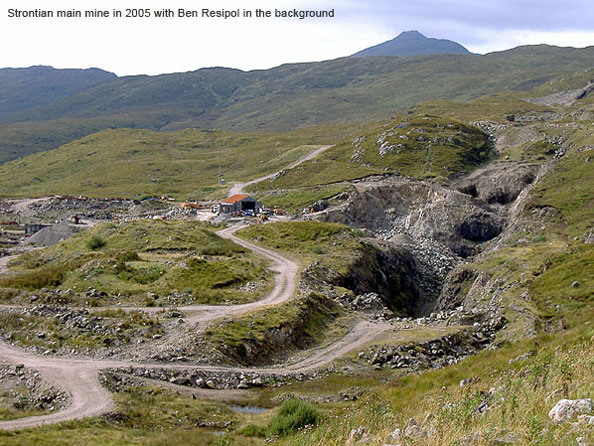
The first record of mining at Strontian was in 1722, a time when conditions in the Highlands were very
different from today. The quickest and safest means of access was by sea, there were virtually no roads into the hills, and the area was considered lawless and rebellious. The Sunart Estate had recently come into the hands of Sir Alexander Murray, who set up residence at Mingary Castle and began a programme of improvements. Lead was known to be found in the hills north of Strontian and Sir Alexander brought skilled miners from the south of Scotland to work the veins.
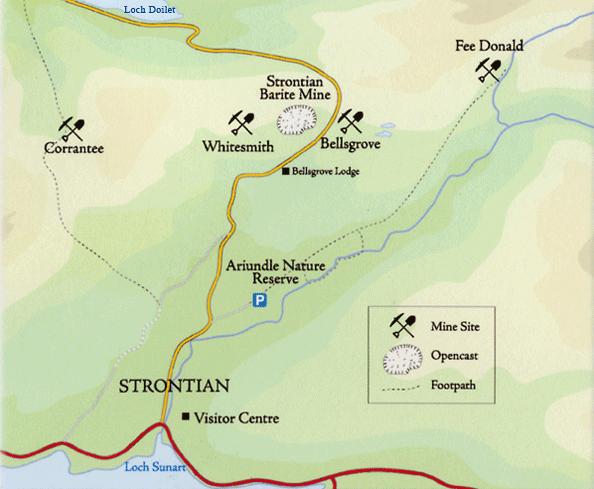
At first things went well, but Murray and his partners had no practical experience of mining and following several bad years they decided to lease the operation to the York Building Company. This proved disasterous, The debts the company ran up eventually bankrupted both the mines and Sir Alexander. The York Building Company relinquished its leases in 1740. A succession of smaller companies then tried their luck, some with moderate success, until 1767, when the estate came into the hands of the Riddell family.
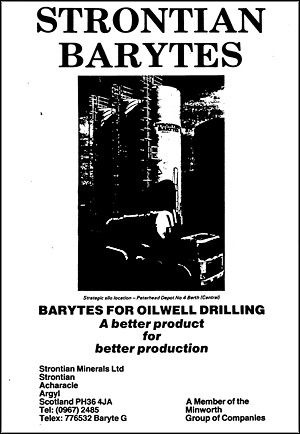 Little is known of the history of the mines for the next half century. Some of the shafts were very deep by the time the Riddell family took ownership of the estate and water was a significant problem. A considerable amount of work must have been done on the Grand Level, which was cut to drain the Bellsgrove workings. For most of the period it seems likely that the mines were worked by small
Little is known of the history of the mines for the next half century. Some of the shafts were very deep by the time the Riddell family took ownership of the estate and water was a significant problem. A considerable amount of work must have been done on the Grand Level, which was cut to drain the Bellsgrove workings. For most of the period it seems likely that the mines were worked by smallindependent groups who paid a fraction of the ore raised (usually an eighth) to the lord in tribute. It was not unusual for an annual income of a thousand pounds to be reported, so a considerable amount of ore must have been raised in this way. The first mine plans date from the turn of the eighteenth century and show a great deal of work had been done. Reports were commissioned on the state of the workings in 1828, but they paint contradictory pictures, one cautionary and the other enthusiastic. In 1846 the Strontian Mining Company took the lease, but they had given up by 1850. A succession of small companies followed, producing up to a few hundred tons of ore annually until the early 1870s when the price of lead crashed. An attempt to reopen Bellsgrove Mine which started 1901 failed before any ore was raised.
Consolidated Goldfields carried out a drilling programme in the 1960’s that identified a deposit of about 2 million tonnes of barite and reserves of zinc but no production took place. Economic conditions were to change in the next 20 years or so with the development of the North Sea Oil industry, barite being an essential ingredient of the muds being used for drilling the oil wells. In 1982 Minworth Ltd commenced work on the deposit by means of 3 opencasts and a drift just to the west of Clashgorm quarry between Whitesmith and Bellsgrove mines and erected a processing plant on site. The quarry and dumps visible from the Strontian to Polloch road date from this period. The barite mine, like so many before it went bankrupt in 1990, but not before it had worked through most of the old lead mine workings, completely obliterating part of Bellsgrove and all of the Middleshop Mine. The area around the barite quarry is currently being worked for aggregate by a local company.
Geology and Mineralogy
The barite lead and zinc mineralisation is associated with a shear zone which extends for over 2 kms, up to 15 metres wide and at least 300 metres deep. Old mine workings show the full extent of mineralisation to be 7kms laterally.
Strontian is the type-locality for Strontianite and Brewsterite. The strontianite occurs in sprays of white, green or brown crystals and is found mainly at Bellsgrove and Whitesmith mines. Brewsterite generally occurs in thin fissures often coating calcite and occasionally strontianite or harmotome with crystals generally to 4 to 5mm long up to a maximum of about 10mm.
Some of the world’s best harmotome specimens have been found at Strontian. Old specimens with lustrous crystals up to 25-30mm can be seen in museum collections, although in recent times, 5-15mm sized crystals are more typical. Other minerals found are sphalerite, galena, cerussite, pyrite, fluorite and quartz-clear and smokey. Heulandite-Sr occurs in the Whitesmith opencut but is extremly rare. Calcite occurs in many different forms, individual crystals not infrequently displaying multiple growth habits. Early generations fluoresce red in UV light whilst later ones fluoresce yellow, orange or pink making attractive multi-coloured objects under the UV lamp. Some specimens have traces of supergene hyrozincite on them which add a blue fluorescence colour to the specimen. Although the most recent mining activity was for barite, crystallised barite is suprisingly rare.
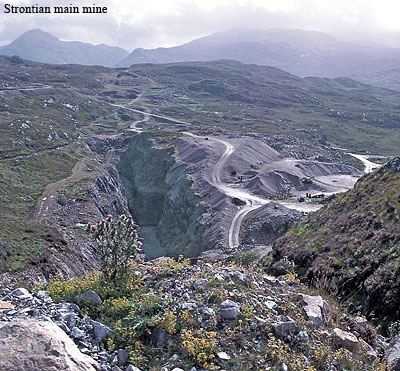 Mineral species by mine:-
Mineral species by mine:-Bellsgrove & Clashgorm
Calcite, harmotome; brewsterite; sphalerite; fluorite, pyrite; quartz; fluorite; galena.
Corrantee
Calcite; galena; sphalerite; marcasite; harmotome; kainosite-Y; ancylite-Ce; hydrozincite.
Fee Donald
Harmotome; calcite; barite; pyrite; galena.
Whitesmith
Brewsterite; strontianite; galena; cerussite; heulandite-Sr; woodruffite; pyrite; calcite, ancylite-Ce.
There are many opencuts and shafts in the area which are dangerous and should not be entered. They are unstable, often flooded and many contain toxic gases. As with any quarry or mine, permission to enter/collect must be obtained first and its SSSI status checked.
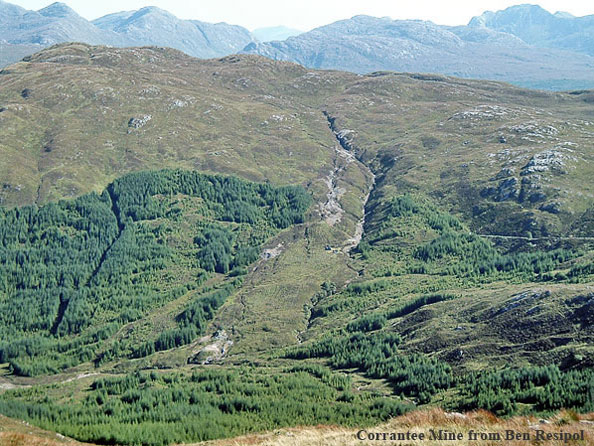
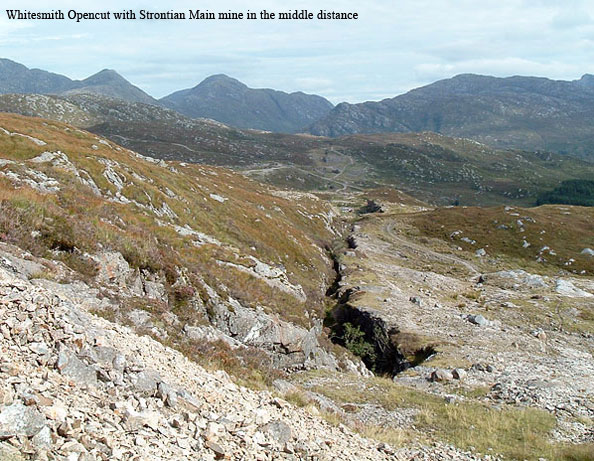
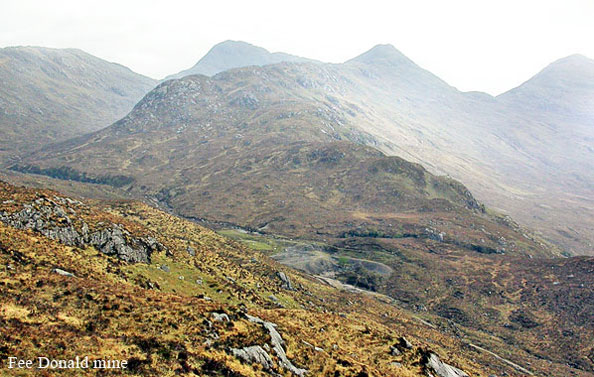
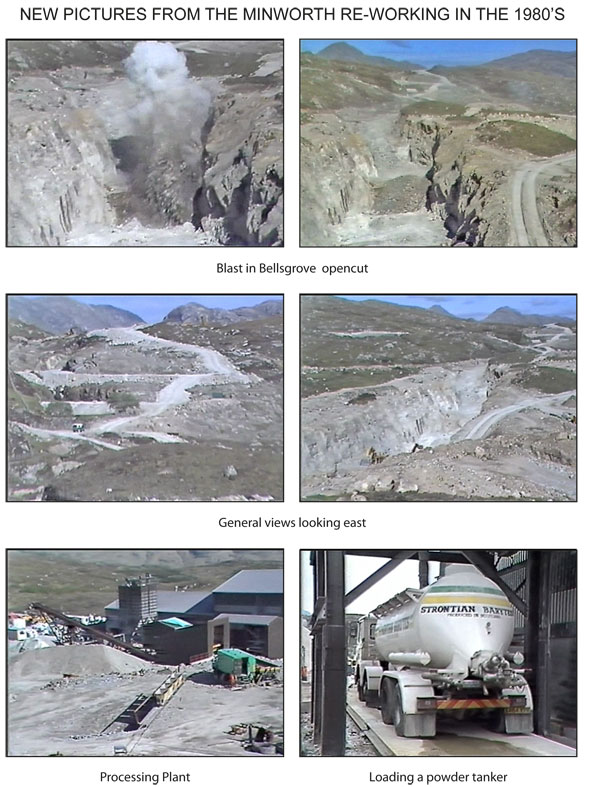
Recent Items for Sale
Minerals of the English Midlands

Minerals of the English Midlands

Mailing List
Interested in our mailing list? Get in touch via the email address on our contact page and we will add you to the mailing list.


